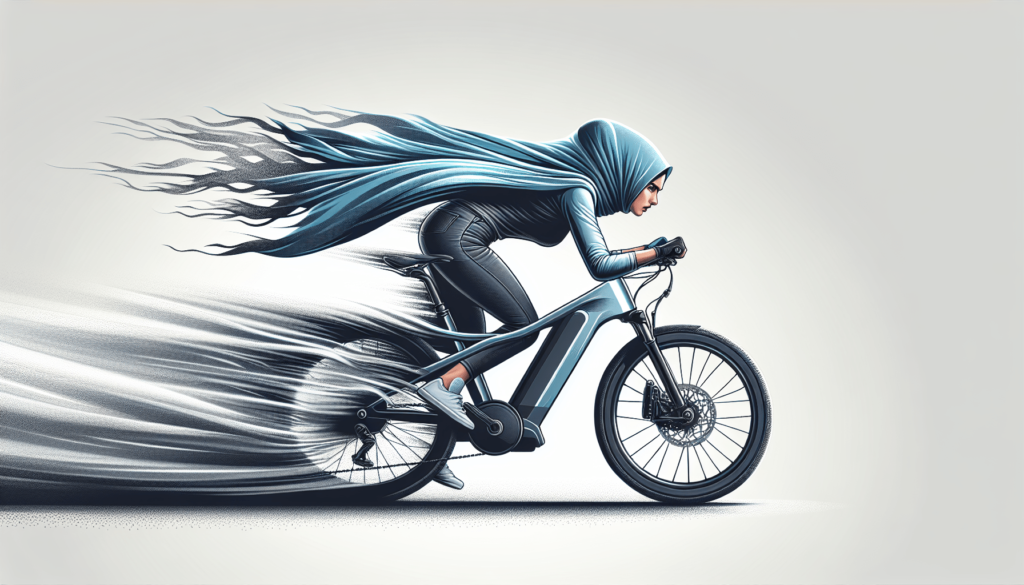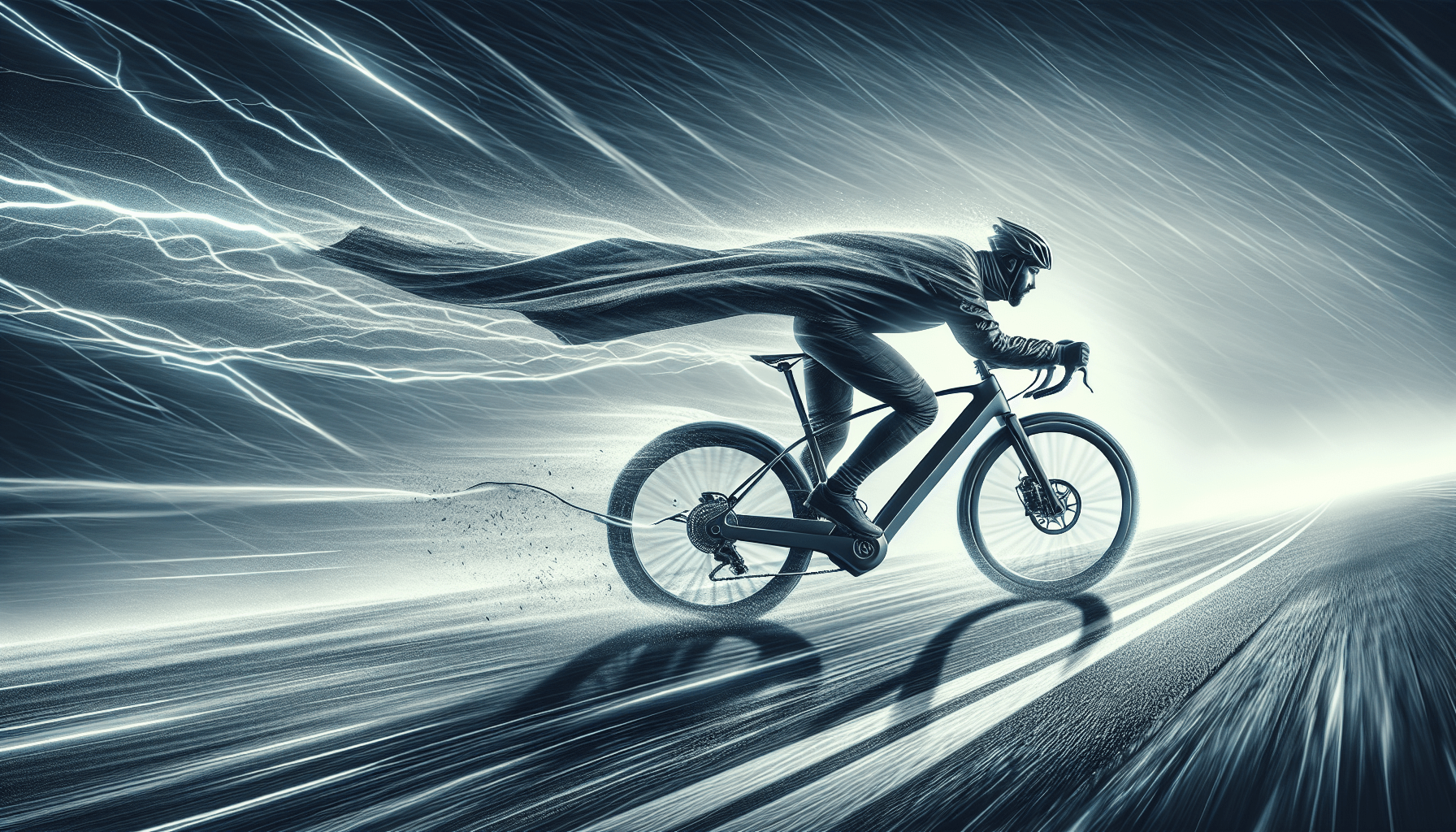Welcome to the article that will explore how e-bikes handle riding against strong winds. E-bikes have become increasingly popular for their efficiency and convenience, but many wonder how they fare in challenging weather conditions. As you continue reading, you will learn how e-bikes are equipped to handle strong winds and maintain a smooth ride for riders. So, sit back, relax, and prepare to be enlightened on how e-bikes conquer the gusty elements. How do e-bikes handle riding against strong winds?
Have you ever been caught in a strong gust of wind while riding your e-bike and wondered how it affects your bike’s performance? Riding against strong winds can be challenging, but with the right techniques and understanding of how e-bikes handle in such conditions, you can make your rides more enjoyable and efficient. In this article, we will delve into how e-bikes handle riding against strong winds and provide you with tips on how to best navigate through windy weather.

Understanding the Impact of Wind on E-bike Performance
Let’s first understand how wind affects e-bike performance. When riding against a headwind, you are essentially pushing against a force that slows you down and requires more effort to maintain your speed. This can drain your battery faster and make your ride feel more strenuous. The aerodynamics of your e-bike also play a significant role in how it handles against strong winds. The shape of your bike, your body position, and the components like wheels and handlebars all contribute to how wind resistance affects your ride.
The Role of Aerodynamics in E-bike Performance
The aerodynamic design of your e-bike can greatly impact how it handles against strong winds. E-bikes with sleek, streamlined frames are more aerodynamic and can cut through the wind more efficiently, reducing the resistance and making it easier to ride against headwinds. On the other hand, e-bikes with bulkier frames and boxy designs may face more resistance, requiring more effort to maintain speed and conserve battery power.
Body Position and Wind Resistance
Your body position on the e-bike can also affect how it handles in windy conditions. By crouching lower and tucking in your elbows, you can reduce wind resistance and make it easier to ride against headwinds. This aerodynamic position helps you cut through the wind more efficiently, requiring less energy to ride against strong gusts.
Tips for Riding E-bikes Against Strong Winds
Now that we have a better understanding of how wind affects e-bike performance, let’s explore some tips and techniques to help you navigate through windy weather with ease.
Choose the Right Gear Ratio
When riding against strong winds, choosing the right gear ratio can make a significant difference in how your e-bike handles the resistance. Opt for a lower gear to make pedaling easier and conserve battery power. This will allow you to maintain a consistent speed and reduce the strain on your legs and motor when riding against headwinds.
Maintain a Steady Pace
To effectively ride against strong winds, it’s essential to maintain a steady pace and avoid sudden bursts of acceleration. By keeping a consistent speed, you can conserve battery power and make your ride more efficient. Focus on pedaling smoothly and evenly to overcome the resistance of the wind and reach your destination with ease.
Utilize Pedal Assist and Power Modes
Most e-bikes come with multiple pedal assist and power modes that can help you adjust to riding against strong winds. When facing headwinds, switch to a higher pedal assist level or power mode to provide an extra boost of power and assistance. This can make it easier to ride against the resistance of the wind and reach your destination more quickly.
Tuck in and Streamline Your Body Position
As mentioned earlier, your body position plays a crucial role in how your e-bike handles against strong winds. Tuck in your elbows, crouch lower, and streamline your body position to reduce wind resistance and make it easier to ride against headwinds. By adopting a more aerodynamic posture, you can cut through the wind more efficiently and conserve energy during your ride.
Optimize Your E-bike’s Aerodynamics
To improve your e-bike’s aerodynamics and enhance its performance against strong winds, consider making some adjustments to your bike’s components. Upgrading to sleeker handlebars, lighter wheels, and a more aerodynamic seat can help reduce wind resistance and make your ride more efficient. Additionally, maintaining proper tire pressure and keeping your e-bike clean and well-maintained can also contribute to better aerodynamics and handling in windy conditions.
Monitor Your Battery Life
Riding against strong winds can drain your e-bike’s battery faster than usual, so it’s essential to monitor your battery life and adjust your riding style accordingly. Keep an eye on your battery level and use power-saving techniques like lowering your pedal assist level, reducing your speed, and conserving energy whenever possible. By managing your battery life effectively, you can ensure a smoother and more efficient ride against headwinds.

Conclusion
Riding an e-bike against strong winds can be challenging, but with the right techniques and understanding of how e-bikes handle in such conditions, you can make your rides more enjoyable and efficient. By optimizing your e-bike’s aerodynamics, choosing the right gear ratio, maintaining a steady pace, and utilizing pedal assist and power modes, you can effectively navigate through windy weather with ease. Remember to monitor your battery life, streamline your body position, and make necessary adjustments to enhance your e-bike’s performance against headwinds. With these tips and techniques in mind, you can confidently ride your e-bike in windy conditions and make the most of your cycling experience.

